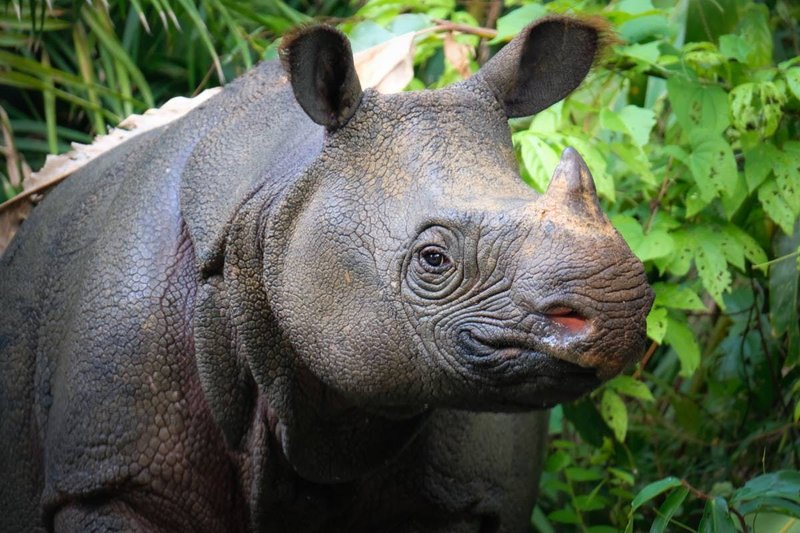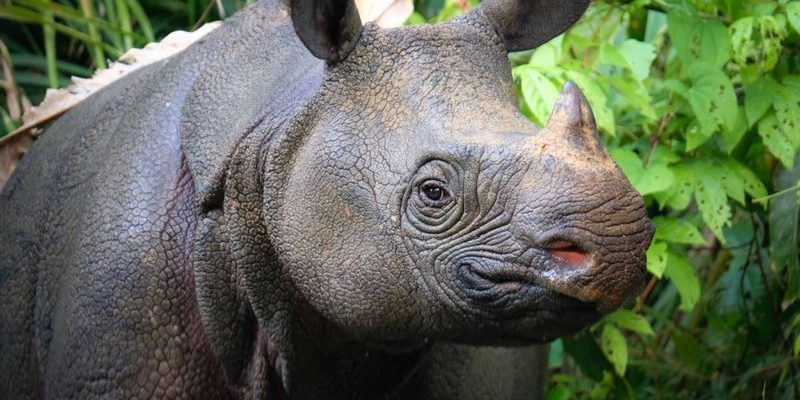
What makes the Javan rhino especially interesting is that it’s one of the rarest large mammals on Earth. With fewer than 80 individuals left in the wild, these gentle giants are not just an ecological wonder but also a poignant reminder of the fragility of our planet’s biodiversity. So, let’s dive deeper into the Javan rhinoceros’s role in its ecosystem and explore how this remarkable creature influences its surroundings.
An Overview of the Javan Rhinoceros
The Javan rhinoceros is unique, both in appearance and behavior. It’s smaller than its African cousins, weighing between 1,800 to 2,200 pounds, and it has a single horn that can grow up to 10 inches long. This horn isn’t just for show; it serves many purposes, like foraging and self-defense. You might picture it as a living tank, plowing through dense forests and grasslands in search of food.
Being a herbivore, the Javan rhinoceros primarily feeds on a variety of leaves, fruits, and shoots. This diet is not merely a matter of survival; it plays an active role in maintaining the health of its habitat. As the Javan rhinoceros consumes these plants, it helps control vegetation growth, allowing for a diverse ecosystem to flourish.
Moreover, their foraging habits can even help in seed dispersal. When the rhinos pass through the forest, they often munch on fruits and then leave the seeds behind in their dung, which can later sprout into healthy new plants. This indirect contribution to plant growth is a prime example of how interconnected ecosystems truly are.
Habitat and Range of the Javan Rhinoceros
Unlike its better-known African relatives, the Javan rhinoceros is primarily found in Ujung Kulon National Park in Indonesia. This remote and rugged landscape is home to the last known population of Javan rhinos, making it one of the most precious ecosystems in the world. The dense forests and coastal scrubs offer a unique environment where these rhinos can thrive.
The limited range makes the Javan rhinoceros particularly vulnerable. Any threat—like habitat loss due to deforestation or human encroachment—can have dire consequences not just for the rhinos, but also for the entire ecosystem that relies on them. When we lose such a critical species, we risk unraveling the very fabric of biodiversity, which can lead to unforeseen effects on other plants and animals in the area.
What’s even more interesting is how Javan rhinos adapt to their habitat. They create wallows—shallow depressions filled with mud—where they take baths. This behavior isn’t just for fun; it helps them regulate their body temperature and keep their skin healthy. By wallowing, they also create small pools that can serve as drinking water for other animals, making their presence beneficial far beyond their own needs.
The Javan Rhinoceros and Its Role as a Megaherbivore
Being a megaherbivore, the Javan rhinoceros plays a pivotal role in shaping its ecosystem. These large animals consume massive amounts of vegetation, which influences plant community structures and diversity. Think of them as nature’s lawnmowers, keeping overgrown areas in check and ensuring that sunlight can reach smaller plants.
The Javan rhino’s foraging behavior directly impacts the growth of certain plant species. By selectively feeding on specific types of plants, they help prevent any one species from dominating the landscape. This creates a mosaic of plant life, which is essential for sustaining other wildlife. For instance, many birds and insects depend on a diverse range of plants for food and shelter.
Moreover, the rhino’s dung plays a surprising role in fertilizing the soil. Instead of merely being waste, it acts as a nutrient-rich cocktail that supports new plant growth. This means that even after they leave the area, the Javan rhinos are still contributing to the ecosystem, providing a cycle of life that benefits everyone around them.
Conservation Challenges Facing the Javan Rhinoceros
The Javan rhinoceros faces several conservation challenges, primarily due to its critically low population numbers. Habitat destruction is the biggest threat. As human activities expand, forests are cut down for agriculture and urban development, shrinking the rhino’s living space. Imagine if your home suddenly shrank to just a room in a house—life would become incredibly tough.
Poaching, driven by the demand for rhino horns, is another significant issue. Despite the horn being made of keratin—similar to human nails—some cultures believe it holds medicinal properties. This myth has led to illegal hunting, putting further pressure on the already dwindling population.
Conservation efforts are crucial. Organizations, local communities, and governments are working hard to protect the Javan rhinoceros and its habitat. Strategies include anti-poaching patrols, habitat restoration projects, and raising awareness about the importance of these magnificent creatures. The fight to save the Javan rhinoceros is also about preserving biodiversity as a whole, reminding us how interconnected all aspects of nature truly are.
Why the Javan Rhinoceros Matters to Biodiversity
You might be wondering, “What’s the big deal about one type of rhino?” The truth is, the Javan rhinoceros is a symbol of biodiversity, representing the delicate balance of ecosystems. When we protect the Javan rhino, we’re not just saving a single species; we’re safeguarding a whole community of plants and animals that rely on the health of that ecosystem.
By maintaining the plant diversity in their habitat, Javan rhinos indirectly help other species thrive. For instance, the diverse flora supports a variety of insects and birds, many of which are crucial for pollination and seed dispersal. If the rhinos were to disappear, the ripple effect would be felt far and wide, disrupting entire food chains and ecosystems.
Furthermore, the loss of the Javan rhinoceros would signify a broader failure in conservation efforts. It would serve as a warning sign that human actions can have irreversible impacts on the natural world. Therefore, protecting this magnificent creature is not just about preserving a species; it’s about the health and sustainability of our planet as a whole.
The Future of the Javan Rhinoceros
Looking ahead, the future of the Javan rhinoceros hangs by a thread. Conservationists and researchers are hopeful, but significant challenges remain. Continued efforts to protect the remaining populations and their habitats are essential for their survival. With the right support and awareness, we can turn the tide for these incredible animals.
Creative conservation strategies, like involving local communities, are also gaining ground. By educating people about the importance of the Javan rhinoceros and its role in the ecosystem, communities can become active participants in wildlife preservation. This connection fosters a sense of ownership, encouraging stewardship of the land.
In conclusion, the Javan rhinoceros isn’t just an animal on the verge of extinction; it’s a vital piece of the ecological puzzle. Every effort to conserve and protect it ultimately contributes to a healthier and more balanced ecosystem. By valuing the Javan rhinoceros, we take a step toward honoring the complex web of life on our planet—a responsibility we all share.

